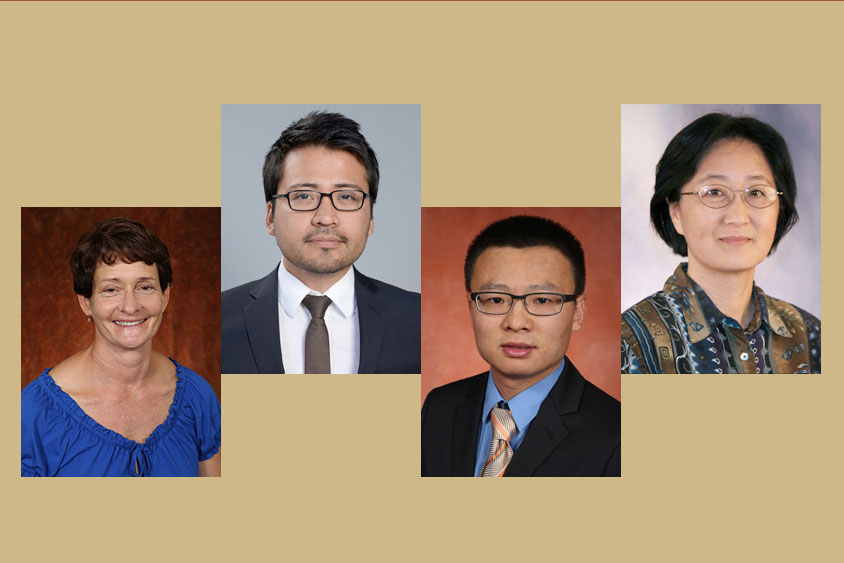
Four teams led by Florida State University faculty members will receive funding from the university as they work to translate their innovative research into successful commercial products.
The researchers will be awarded critical financial support following their successful presentations at FSU’s biannual GAP competition, a panel event organized by the Office of the Vice President for Research where entrants pitch their novel ideas to a committee of state and local businesspeople.
The diversity of the prize-winning projects reflects the breadth of important research conducted at FSU. Successful proposals from the 2017 winter GAP competition include breakthroughs in LED technology, a cutting-edge medical device, a materials database that could dramatically increase the speed of scientific innovation and an advanced carbon nanotube foam that could help attenuate the effects of heat in electronics.
“The forward-thinking research being produced by our faculty is helping to address important problems facing people and businesses around the world,” said Vice President for Research Gary K. Ostrander. “The GAP competition allows our researchers to pitch their ideas to a panel of business experts who understand what it takes to nurture a good idea through development and along the path to commercial viability.”
Over the past 10 years, the GAP program has awarded university researchers more than $2 million for projects designed to develop new cancer treatments, food contamination kits and advanced tools for educational assessment.
The winter competition’s awardees will split a pot of $86,377 provided by the Office of the Vice President for Research.
The winning proposals are:
- A therapeutic splint to aid people with peripheral arterial disease: Judy Delp, a professor in the College of Medicine, and Emily Pritchard, an adjunct faculty in the FAMU-FSU College of Engineering, developed a specialized splint that uses calibrated stretching to manage the symptoms of peripheral arterial disease (PAD). More than 200 million people worldwide suffer from PAD, a condition that causes walking impairment due to insufficient oxygen flow to skeletal muscles, most often in the lower leg. The splint designed by Delp and her team is an affordable, convenient and safe intervention that has been demonstrated through clinical trials to promote blood vessel formation and decrease pain levels during walking.
- A unique “materials genome” database: Jose Mendoza-Cortes, an assistant professor in the FAMU-FSU College of Engineering, used a system of proprietary algorithms to create a database that will allow scientists to reliably predict which compounds will produce materials with the most desirable properties for a given purpose. In the same way the decoded human genome helps to illuminate the links between DNA and biological activity, Mendoza-Cortes’ database could help reveal the connections between materials’ fundamental structures and physical properties. Such a database could spur innovation by substantially reducing the time needed for arduous trial and error experimentation.
- Wearable, low-cost phototherapy products: Zhibin Yu, an assistant professor in the FAMU-FSU College of Engineering, used recent advances in single-layer and highly flexible LEDs to develop affordable, lightweight and ultrathin phototherapeutic products. Yu’s stretchable light source will be able to stick to human skin like a tattoo or bandage, enabling the application of phototherapeutic treatment for skin conditions like jaundice, psoriasis and acne without the need for large and cumbersome light-emitting apparatuses.
- Heat spreading carbon nanotube foam: Mei Zhang, an associate professor in the FAMU-FSU College of Engineering, used dense networks of carbon nanotubes to construct an advanced foam that could significantly improve thermal management in heat-sensitive electronic devices. As electronics shrink in size and rapidly increase in performance power, compact and efficient cooling systems become increasingly important. Zhang’s dynamic foam outperforms aluminum and copper heat spreaders, and its pliability and lightweight design could accelerate the development of flexible electronics as well as electronics with uneven surfaces.
For more information on the GAP competition, visit the FSU Office of Commercialization.




